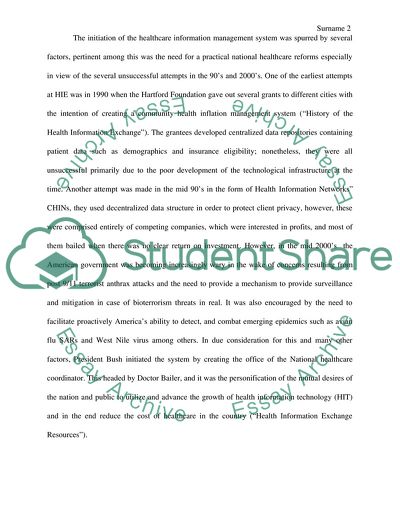Cite this document
(Health Information Exchange Research Paper Example | Topics and Well Written Essays - 2000 words, n.d.)
Health Information Exchange Research Paper Example | Topics and Well Written Essays - 2000 words. https://studentshare.org/health-sciences-medicine/1783953-health-information-exchange-define-hie-list-dilemma-address-challenge-discuss-the-history-of-hie
Health Information Exchange Research Paper Example | Topics and Well Written Essays - 2000 words. https://studentshare.org/health-sciences-medicine/1783953-health-information-exchange-define-hie-list-dilemma-address-challenge-discuss-the-history-of-hie
(Health Information Exchange Research Paper Example | Topics and Well Written Essays - 2000 Words)
Health Information Exchange Research Paper Example | Topics and Well Written Essays - 2000 Words. https://studentshare.org/health-sciences-medicine/1783953-health-information-exchange-define-hie-list-dilemma-address-challenge-discuss-the-history-of-hie.
Health Information Exchange Research Paper Example | Topics and Well Written Essays - 2000 Words. https://studentshare.org/health-sciences-medicine/1783953-health-information-exchange-define-hie-list-dilemma-address-challenge-discuss-the-history-of-hie.
“Health Information Exchange Research Paper Example | Topics and Well Written Essays - 2000 Words”. https://studentshare.org/health-sciences-medicine/1783953-health-information-exchange-define-hie-list-dilemma-address-challenge-discuss-the-history-of-hie.


